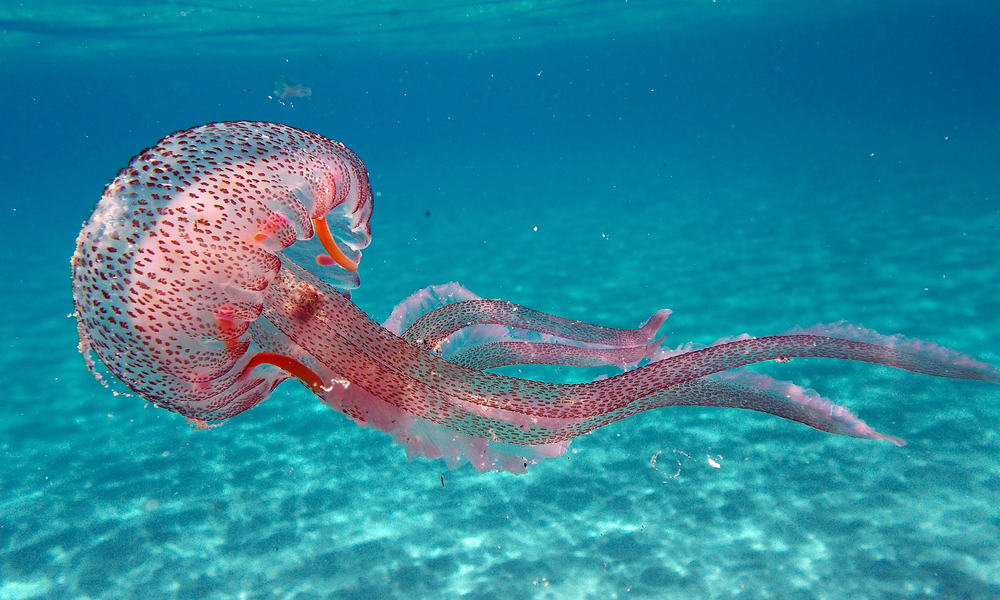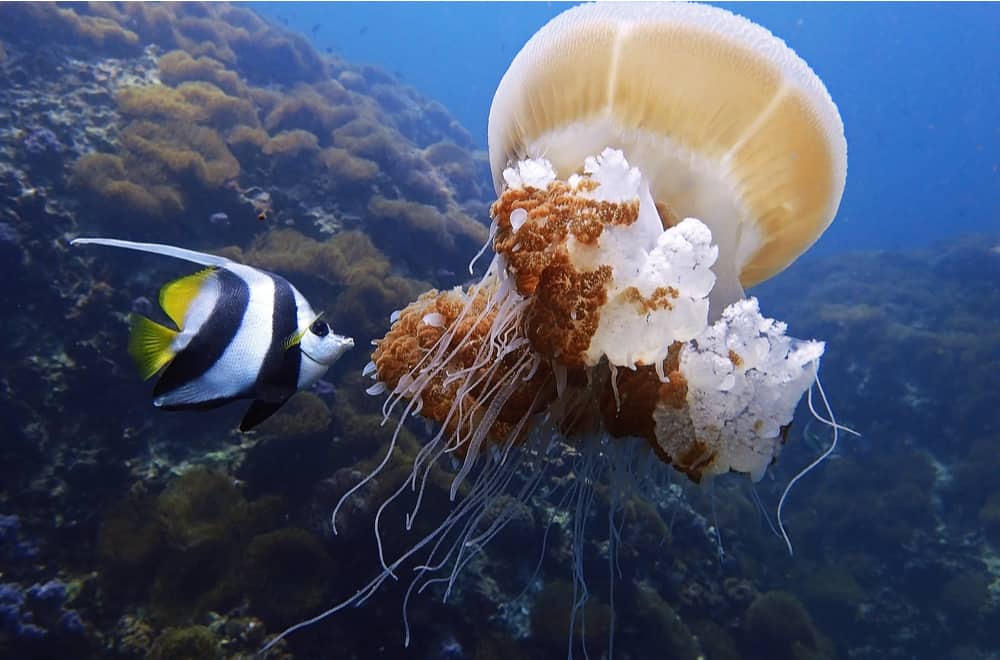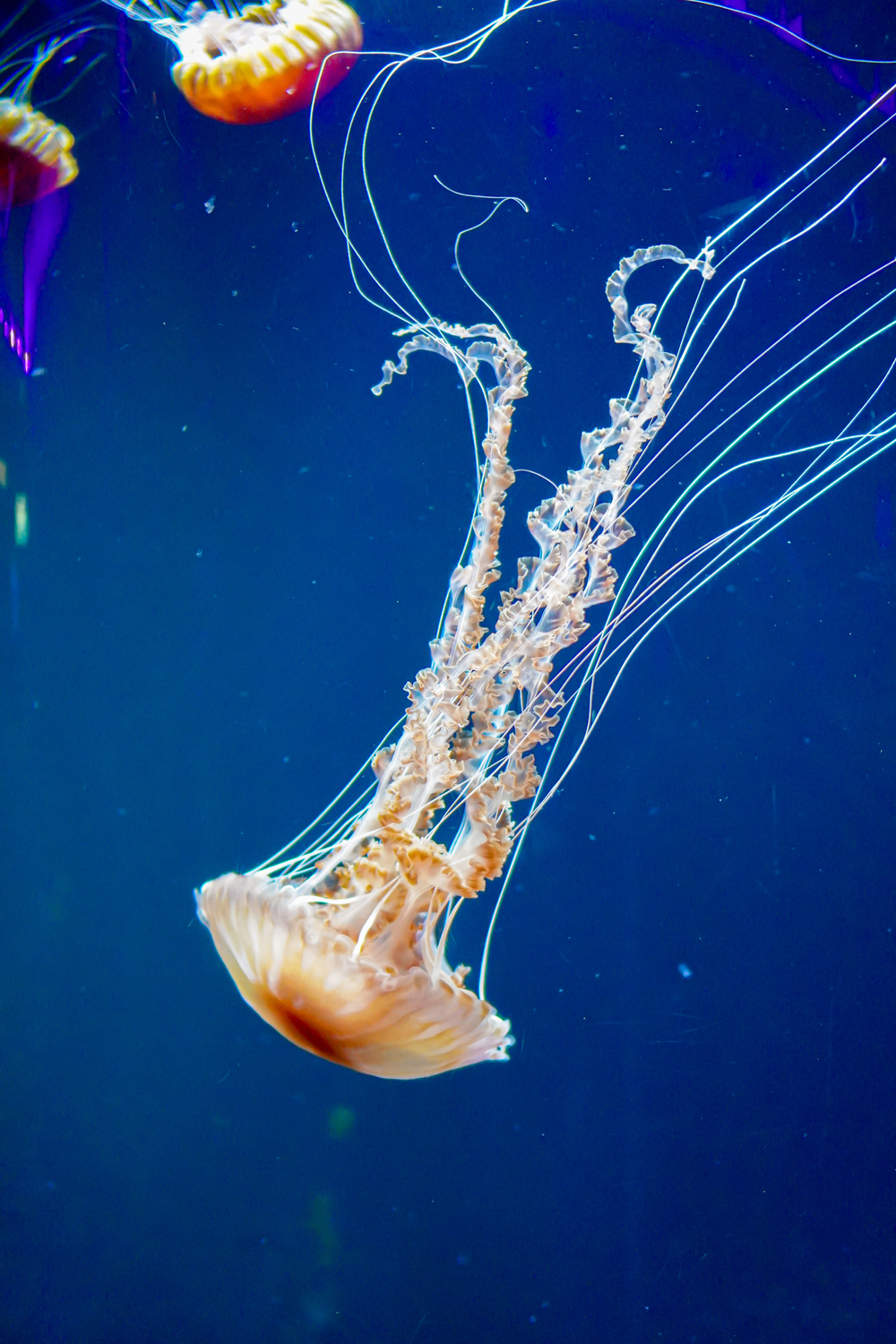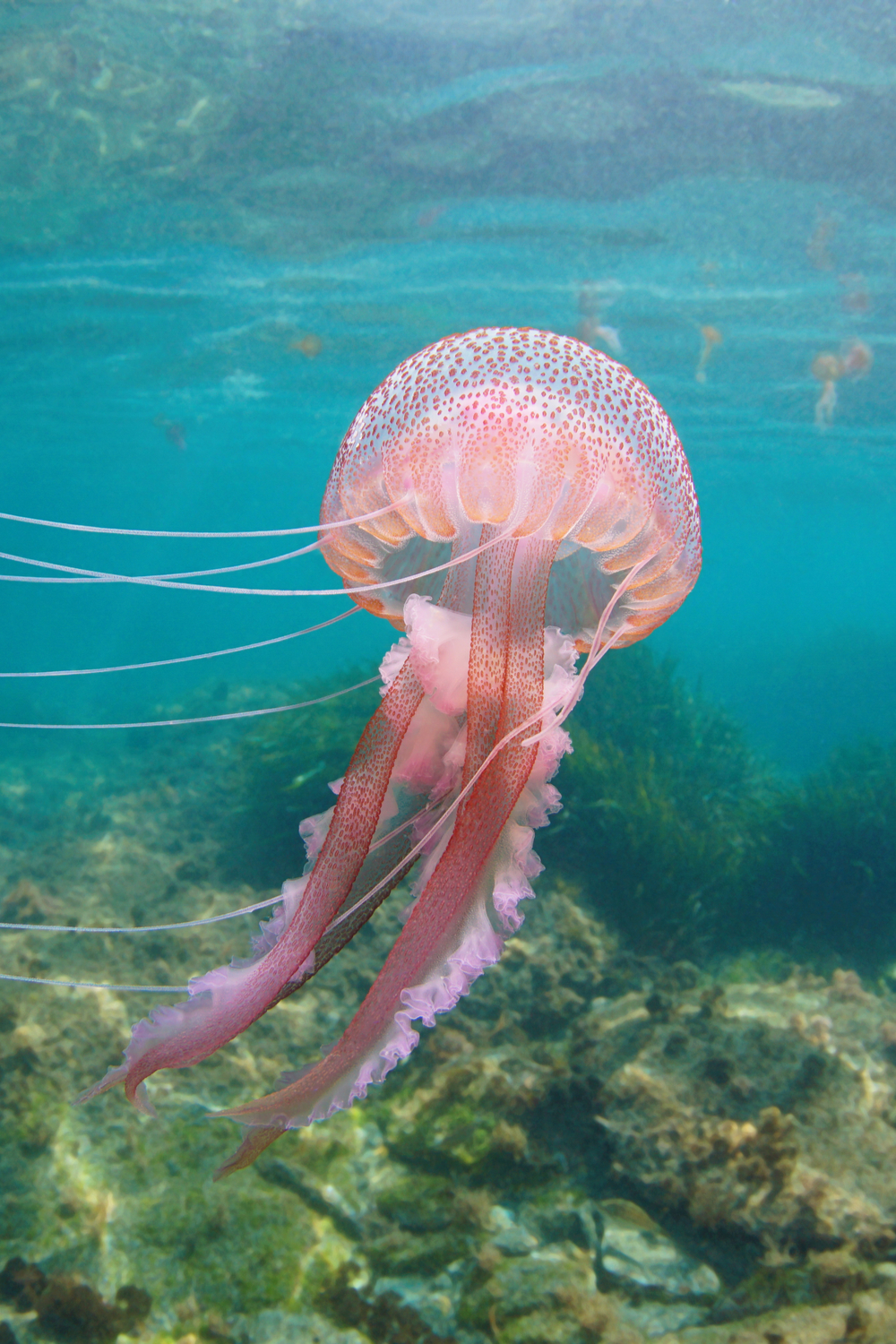Jellyfish are fascinating creatures that have lived in the ocean for more than 500 million years. They not only complement the marine ecosystem but also make beautiful pets, adding color to aquariums. But what do jellyfish eat? Do untamed jellies eat similar food items as pet species? We answer these questions and talk more about jellyfish below.
Jellyfish Habits and Biology
Jellyfish are free-swimming sea animals that thrive in cold arctic and tropical warm waters. Despite what their name hints, these creatures are not fish; they are invertebrates, meaning, they have no backbone. In fact, jellyfish don’t have any bones. Their translucent, bell-shaped bodies are made of slippery, jelly-like material, hence their name.
There are over 2, 000 known jellyfish species, all of whose bodies are composed of more than 94% water. In addition to having no bones, jellyfish have no brain, blood, and heart either. Because of this, they are not able to swim properly; they rely on currents to move through the water. That’s why you will find so many of them washed up on the beach.
Jellyfish can swim alone or in a group called a bloom. If you have been on a boat or at the beach where it seemed like there were jellyfish everywhere, then you have seen a jellyfish bloom. And while these blooms are beautiful to look at, they can pose a danger to smaller fish species.
One of the things that jellyfish are known for is their sting. These creatures have millions of nematocysts, tiny stinging cells located in their tentacles, meant for catching prey. When the nematocysts penetrate the prey, they release a toxin to kill it. That’s why a jellyfish sting hurts so bad.
Some stings such as those from box jellyfish can be deadly, while some nematocysts do not penetrate human skin at all.
And did you know that the jellyfish you see is just one phase of the fish? That’s right! Jellyfish go through several stages throughout their lifecycle. What we see often is the medusa stage, which is the adult reproductive phase. During other stages(egg, larva, polyp, ephyra), you may not even know it is a jellyfish.
Fun Fact: Due to the complex lifecycle of jellyfish, these creatures reproduce both sexually and asexually.
What Do Jellyfish Eat in the Wild?
Jellyfish are meat-eating animals, but because they can’t swim properly, they are opportunistic predators, meaning, they eat only what comes their way instead of ambushing or pursuing their prey. They wait until the prey gets near them after which they trap or sting it with their nematocyst.
Whenever the prey touches the tentacles of the jellyfish, the nematocysts shoot out and inject venom into the prey, paralyzing or even killing it. The “fish” then pulls the food into the mouth. Some jellyfish species have oral arms that help direct the meal to the mouth. Jellyfish will only eat organisms that can fit into their mouths.
Check out this video to see how a jellyfish catches and eats its prey:
What Do Jellyfish Like to Eat?
Adult jellyfish enjoy eating:
- Small fish
- Lobsters
- Barnacles
- Shrimps
- Comb jellies
- Crustaceans
- Crabs
- Other jellyfish
Baby jellyfish mostly feed on:
- Phytoplankton
- Algae
- Seaweed
- Small fish
How Jellyfish Diet Benefits the Ecosystem
Jellyfish play a crucial role in the marine ecosystem and food chain. By feeding on comb jellies, zooplankton, crustaceans, and seaweed, they ensure the continuity of the food chain and prevent overpopulation in the sea.
But maintaining a sustainable food chain is not the only thing jellyfish do. These creatures have been found to provide space and habitat for developing larval fish. The fish use jellyfish to protect themselves from predators, which helps minimize their mortality.
What Do Jellyfish Eat As Pets?
In the aquariums, jellyfish are fed by adding their specific foods to the tank. While different species of jellyfish feed on different types of foods, almost all jellies will eat the following:
- Baby brine shrimp: Brine shrimps can be bought online or at the local pet store either live or in frozen form. If you can rear your own brine shrimp, even better, as this will guarantee your jellyfish only eats healthy foods. Live shrimp brine can stay in the refrigerator for more than ten days, sometimes up to two weeks. Find a small opening in the aquarium and feed your jellyfish through it so you don’t get stung.
- Krill and phytoplankton: You can blend these two food items together into a paste for easy feeding. After you have made your paste, simply use a feeding needle or long tubing to add it into the water. Make sure to put the food near the jellyfish so it can see it. We recommend feeding this alongside brine shrimp for added nutrition.
When choosing food for your pet jellyfish, make sure to consider the age of the “fish”. Large, adult jellyfish will enjoy catching live prey than eating frozen foods. Juvenile jellies, on the other hand, will be better off with chopped frozen foods before they grow older and learn how to catch their own food.
Tips to Feed Jellyfish
1. Avoid Overfeeding Your Jellyfish
Only feed your jelly what they can handle. Leaving foods in the tank can promote the growth of bacteria that can contaminate the water. If you have a mix of baby and adult jellies, you will not be encouraging healthy growth by overfeeding them.
Also, by overfeeding, you will be encouraging your jellyfish to outgrow their tank quickly, which means you will be required to change the tank just as quickly.
But it is also important that you make sure your “fish” is eating enough. When a jellyfish has eaten, you can see the food in their oral arms. Their stomach will also change its color to that of the food they have eaten. You can be able to tell if your jelly has had a sufficient meal by looking at their stomach contents.
2. Feed Your Jellyfish daily
Jellyfish should be fed every day. However, because they don’t move a lot, their food is not broken down quickly, and this can cause them to add weight quickly.
If you notice your jelly is getting too big too fast, consider putting them on a diet. Offer one meal every few days and they will slowly start shrinking back into their right size. Similarly, if you want your jelly to grow fast quickly, offer them a meal twice daily.
3. Keep Cannibal Species in Separate Aquariums
Some jellyfish eat others in the wild. If you have multiple different species and are not sure what they feed on, do your research before putting them together so that the jelly eaters can stay in separate tanks.
Even if your species don’t eat others, we still wouldn’t recommend putting different types of jellies together, as different species seem to irritate each other.
Also, keep in mind that some species eat more than others, and putting these together with poor eaters can mean that the latter will not be getting enough food, which may affect their growth.
4. Avoid Feeding Seaweed From Ponds
If you have baby jellyfish and would like to feed them seaweed, avoid getting weed from the ponds, as this may contain chemicals like chlorine that may be harmful to your jellies. Feed juvenile jellyfish food from a pet store, and if you must give them seaweed, get it from the sea.
5. Feed Nutritious Food
Without consistent provision of nutritious foods, jellyfish will become weak and start to shrink. Malnutrition can cause bloating, which can make the “fish” inactive. So in addition to feeding your jelly the right amounts of food, make sure the food is nutritious.
It’s good to feed them brine shrimps, but this food item will be even more effective if topped with supplements. Check what supplements the local pet store has for jellyfish and sprinkle these in their food at least twice a week.
6. Keep the Jellyfish Aquarium Cycled
If your jellyfish tank is not cycled, then there is a chance that the quality of water is toxic, and this could stress out the jellies and cause them to refuse to eat. As stated earlier, the body of a jellyfish comprises over 94% water. So, if the quality of water is suffering, so is the jellyfish. They will have trouble feeding, which could cause stunted growth in the younger ones.
Check your ammonia and nitrate levels and make sure they are below zero. Keep your salinity in check too (do it every day if necessary) so you don’t worry about spiking salinity levels when your jelly is feeding. You can use a hydrometer, refractometer, or electrical conductivity meter to measure salinity.
Summary
In their natural habitat, jellyfish will eat lobsters, shrimps, and other small marine organisms. But in captivity where there isn’t much variety, their diet will primarily be brine shrimps. They capture their food with their venomous nematocysts and they can eat anything that comes near them as long as it can fit in their mouths.



